

Matt Robinson
2026 Skoda Fabia 130 review: Quick drive
25 Minutes Ago
McLaren is moving into a new world with the Artura. How does its new plug-in hybrid supercar stack up the track in Australia?
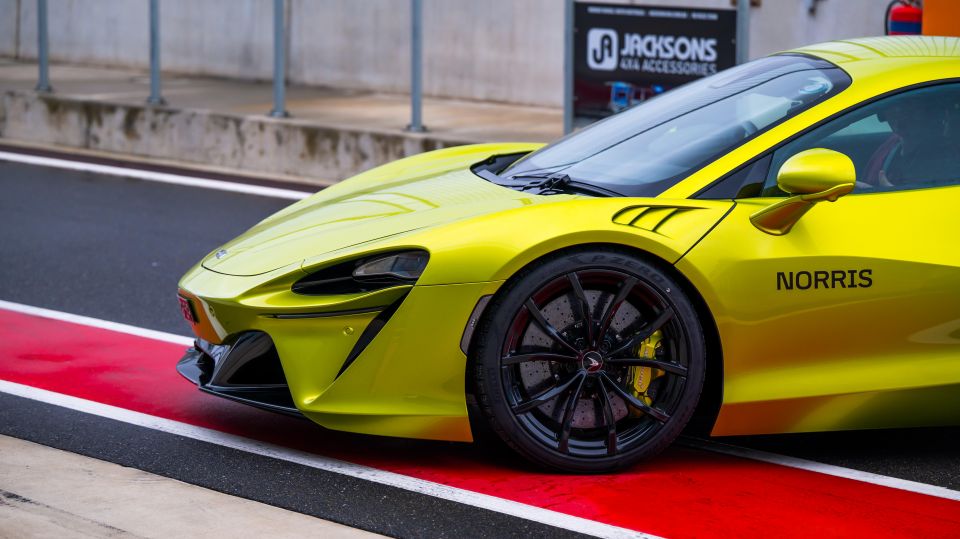
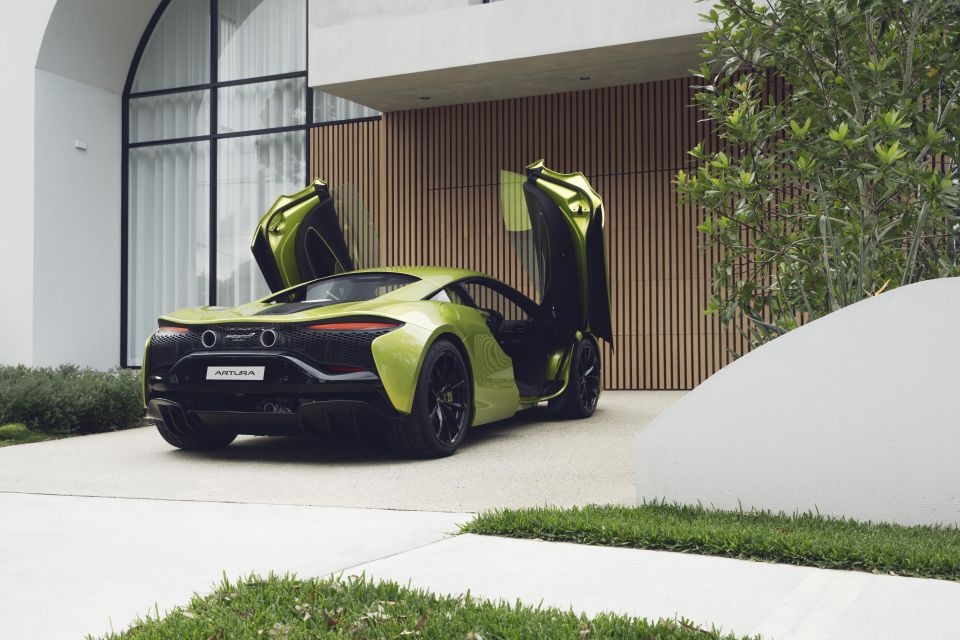

Contributor

Contributor


Contributor

Contributor
Where expert car reviews meet expert car buying – CarExpert gives you trusted advice, personalised service and real savings on your next new car.
You’re looking at a new dawn for McLaren Automotive. Hybrid tech was reserved for commuters like the Prius or hypercars like the McLaren P1 until recently, but the gaps are starting to fill in.

After building its road car business on the back of turbocharged V8 power, the British upstart is making the pivot to a plug-in hybrid V6 powertrain in line with a global push to cut emissions and drive-by noise. Even supercars have to follow the rules, as it turns out.
Of course, there are also some pretty healthy tax breaks afforded to downsized hybrids in some significant markets, which no doubt helps sweeten the deal for buyers keen to get a supercar purchase across the line.
The McLaren Artura has gone through a tough birth. It was announced in November 2020 with a plan to start global deliveries in the third quarter of 2021, but media didn’t get their hands on the first cars until the back end of 2022. When they did there was all manner of software problems, culminating in a pair of well-documented fires.
Change is never easy, and the challenge of transitioning from twin-turbo V8 power clearly was more mountain than molehill. More than two years after it was revealed though, the Artura has hit Australian shores.
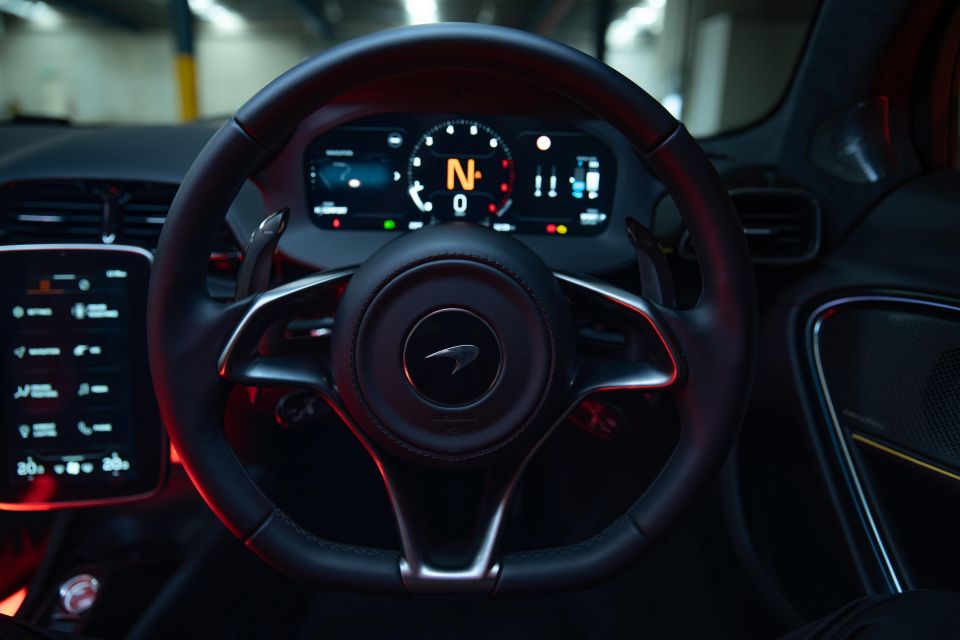
It’s a good-looking car in person, with some interesting surfacing on the massive rear panel and crisp lines, but it also doesn’t scream revolution in the way maybe you’d expect. Of course, there’s always time for wilder designs…
The powertrain isn’t the only place McLaren has used a clean sheet of paper. The Artura rides on a new carbon tub and a shorter wheelbase than the Sport Series before it, built at a new facility not far from Woking, and has a new electrical architecture running throughout it.
Clearly there’s a lot to unpack here. McLaren let us loose at The Bend in a trio of pre-production cars to do just that.
The rating for this review is shared with our road review of the Artura in the UK.
The Artura kicks off just below $450,000 before on-road costs, aligning it roughly with a Porsche 911 Turbo ($432,000) or Ferrari Roma ($410,000).

Although it’s conceptually similar to the Ferrari 296 GTB, given both are hybrid supercars with six-cylinder engines, the baby Ferrari hybrid is more than $100,000 more expensive before you start ticking options boxes.
People who’ve driven both have also commented on the fact they’re very different vehicles in character.
2023 McLaren Artura pricing:
Pricing excludes on-road costs
Buy your new car without the stress. It's fast, simple and completely free.

Great service from Travis and team, second time I have used this business would not hesitate to recommend them to anyone
Craig C.
Purchased a Ford Ranger in Sunshine Coast, QLD
CarExpert helped Craig save thousands on his Ford Ranger, now let us save you on your next new car.
Find a dealIf you’re tall, this might just be the supercar for you.

At six-seven, fitting into anything Italian is a bit of a nightmare without a helmet, let alone if you’re on track. The Artura is a breath of fresh air.
My helmet gently skims the roof, while the integrated steering wheel and instrument binnacle lift up nice and high to leave space for gangly legs. Being comfortable behind the wheel is important all the time, but it’s especially important if you’re planning to push hard on track. McLaren ticks that box emphatically.
Our test cars weren’t fitted with the new Clubsport seats, either. McLaren says they slide fore and aft in an elliptical shape that makes them easier to see out of from every seating position, without sacrificing the level of support you need on the ragged edge. I’m keen to try them out.
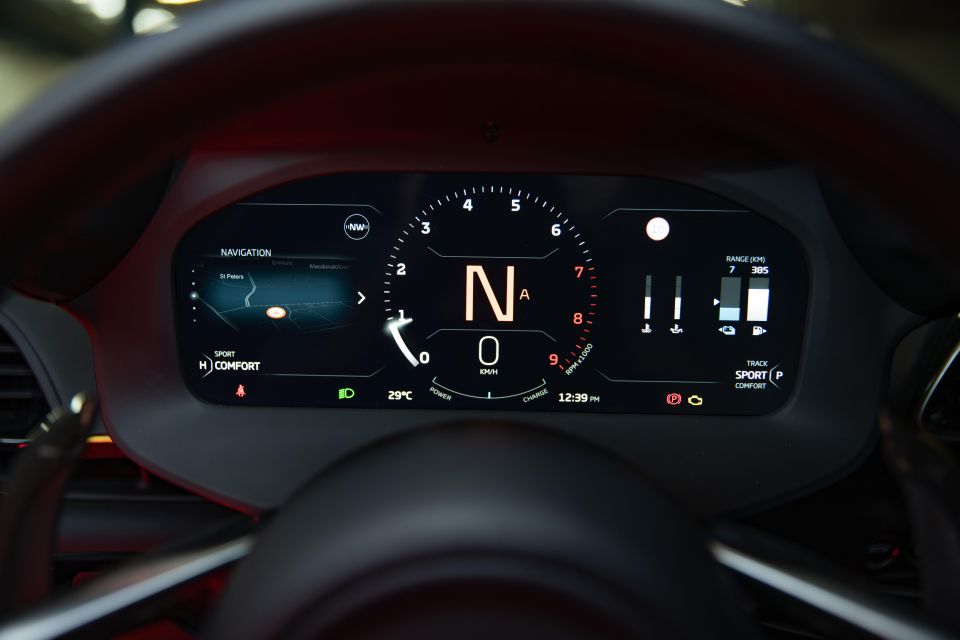
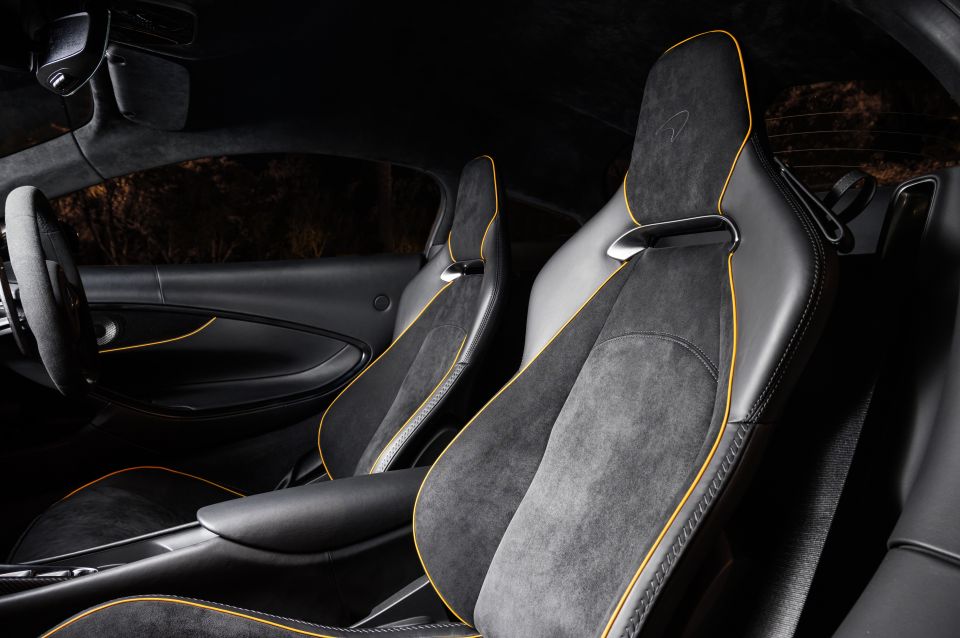
Vision out of the Artura is excellent on the track. Rather than looking out through a letterbox, you’re able to see over the dashboard and through the side windows, which makes it easier to place on track – and no doubt in the city, where the low nose, expensive wheels,
While we’re talking practicality, getting in through those butterfly doors is easier than you might expect, there are cupholders on the transmission tunnel, and there’s even space behind the floating touchscreen for wallets, keys, or phones.
In front of the driver is a perfectly-sized steering wheel with no buttons on it. It feels odd in 2023 to drive a car with such a pared-back wheel, but it also gets you in the mood to drive. It’s not as if you’re short of controls, between the four skeletal column stalks behind the wheel, and the drive mode rockers on the hood of the instrument binnacle.
The graphics on that driver display are nice and crisp, and in Track Mode they put key information directly in front of you. Like the steering wheel, the design makes it feel as though unnecessary bits have deliberately been cast aside to keep the driver’s focus where it belongs.

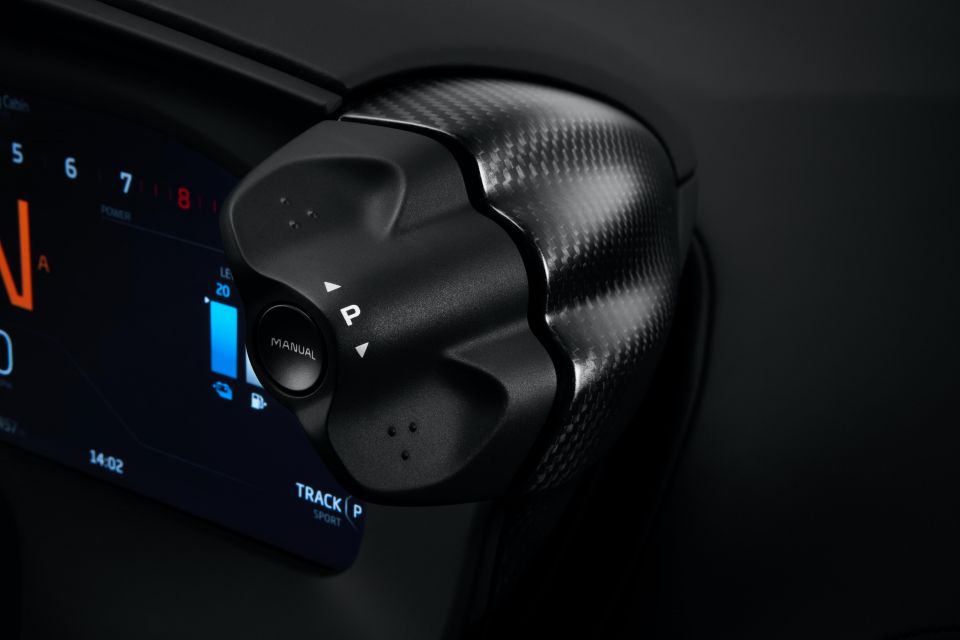
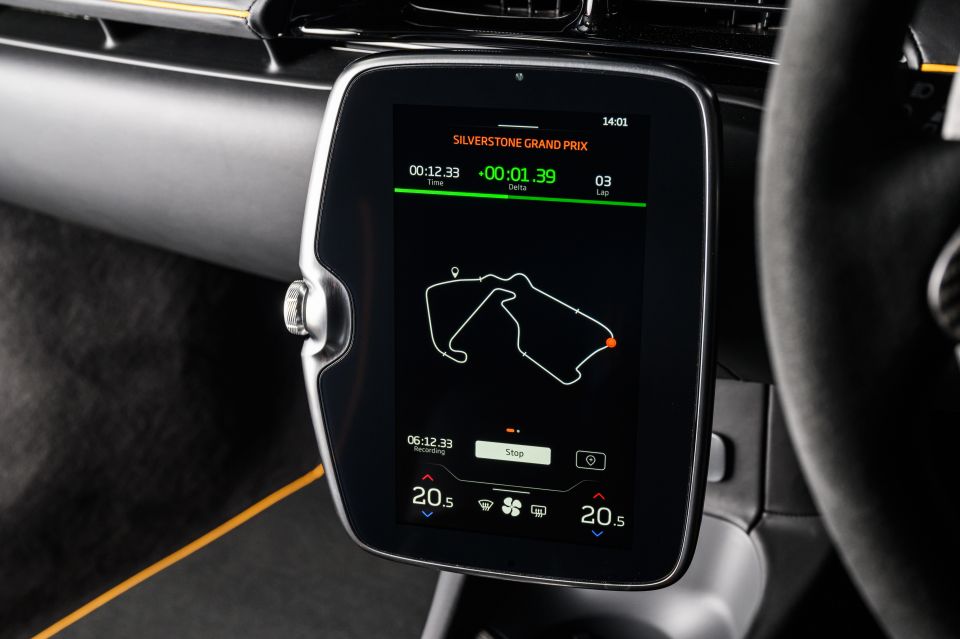
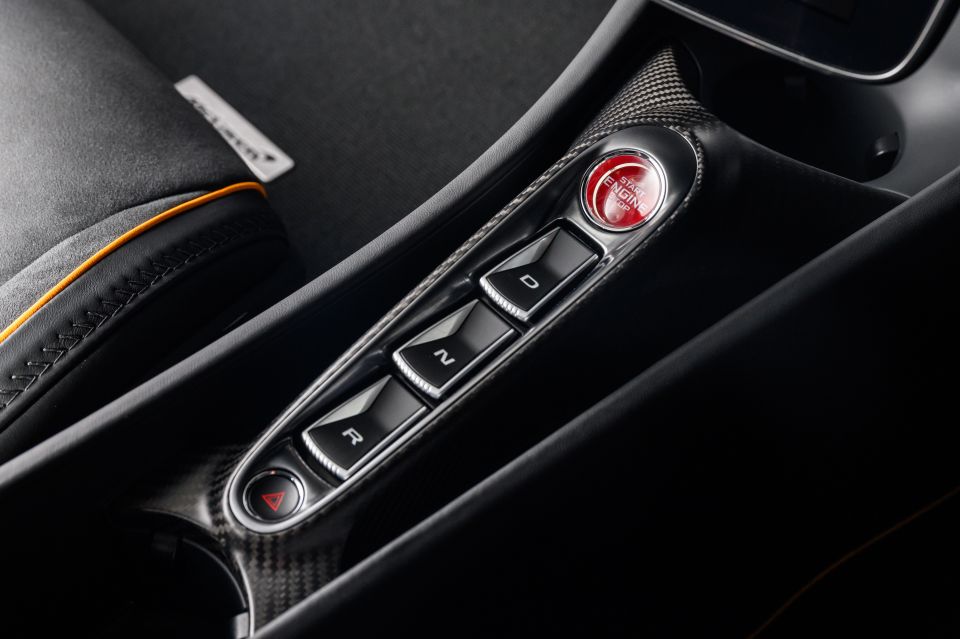
We didn’t spend much time fiddling with the touchscreen, but Alborz spent more time on the road with an Artura in the UK and found it quick, feature-packed, and reliable. None of those are things you would have read about the system in older McLaren cars.
As for the range of options? There are plenty of ways to make the Artura your own. The cars we drove each had a different look and feel, with finishes ranging from supple leather to racy Alcantara, different coloured stitching, and plenty of carbon-fibre. I’d have mine with Alcantara, lots of carbon, and orange stitching.
There’s a little bit of room behind the seats to store a jacket, and the boot (under the front bonnet) measures 160 litres. It’s what you’d hope for in a car like the Artura, given the GT exists for people who want to pack the kitchen sink.
Buckle up, there’s a fair bit going on here.
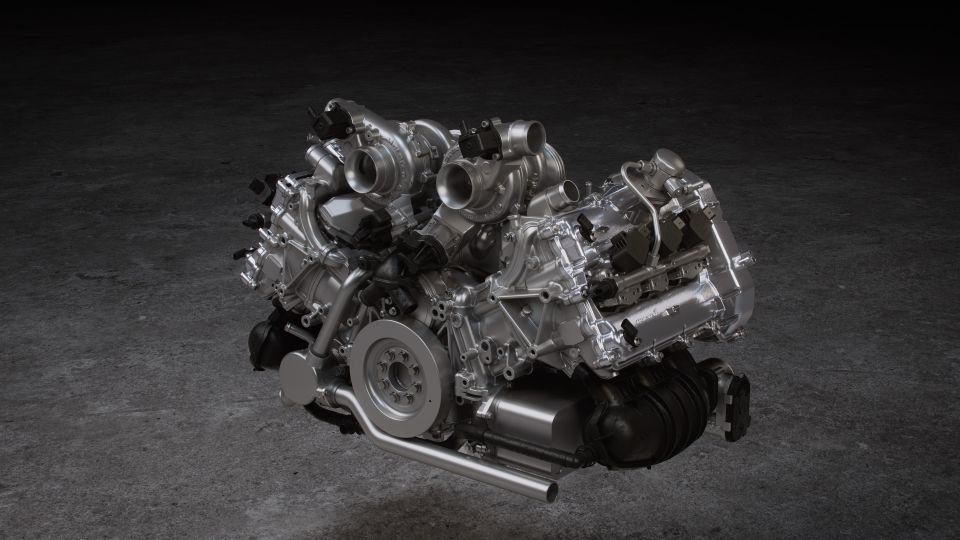
Power in the McLaren Artura comes from a plug-in hybrid powertrain that mates a transmission-mounted electric motor with a twin-turbocharged petrol V6 engine.
First up, the engine. The 3.0-litre unit is new to McLaren, and replaces the 4.0-litre twin-turbocharged V8 that has underpinned its push into the world of road cars (in various states of tune) since the MP4-12C debuted in 2011.
The engine itself makes 430kW of power at 7500rpm (redline is 8500rpm), and 585Nm at 2250rpm.

It’s mated with an electric motor mounted to the eight-speed dual-clutch transmission, which alone makes 70kW of power and 225Nm of torque.
That eight-speed wet-clutch transmission features no reverse gear, and instead uses the e-motor when you’re going backwards. Compared with the seven-speed transmission in older McLaren cars, the ratios are stacked more closely for quicker acceleration.
Peak combined power output is 500kW, and combined peak torque output is 720Nm.
Claimed electric range is 31km on the WLTP test cycle. The 7.4kWh lithium-ion battery pack can be AC charged, but doesn’t feature DC rapid charging due to the extra weight and complexity the hardware brings.
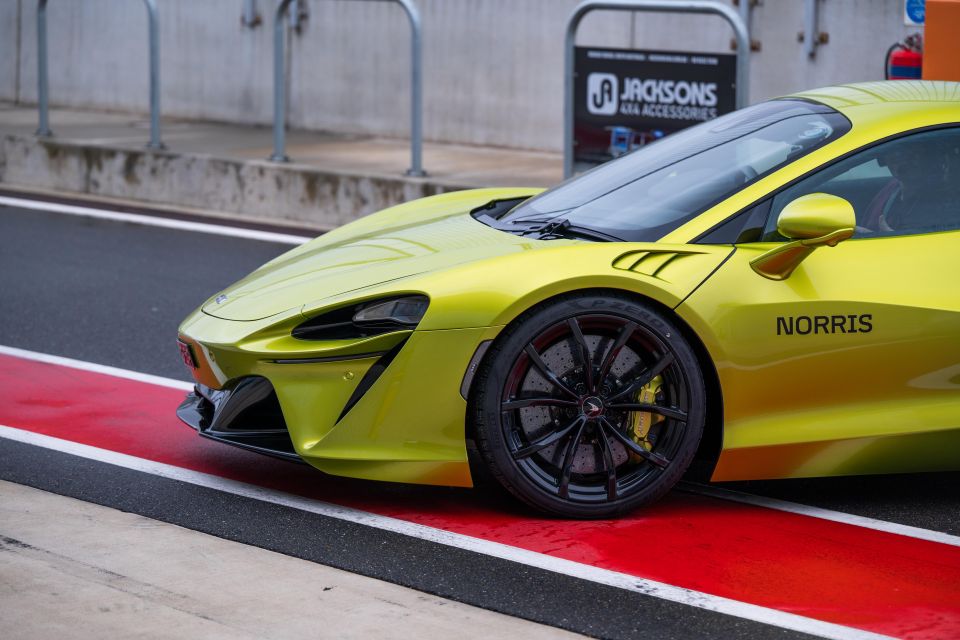
The electric motor is capable of driving the car from a standstill to 130km/h on its own, and can work in tandem with the petrol engine to provide a performance boost. It works hardest at low revs, before its torque delivery tapers off to let the internal-combustion shine in Sport and Track mode.
The Artura is rear-wheel drive, with an electrically-operated differential on hand to help put all 500kW and 720Nm to the road.
McLaren was adamant this wasn’t a track day, but instead was a chance to drive the Artura on a private road in all its different drive modes. That private road just so happened to look exactly like The Bend, though…

It’s strange to start a 500kW supercar in silence, but that’s what you get in the Artura. It defaults to Comfort Mode, which defaults to electric power at low speeds on startup so owners can tiptoe out of their houses without disturbing the kids or neighbours.
The car can also be locked into EV mode, although the only reason to do that in Australia would be because you feel like flying under the radar. Unlike in Europe, none of our cities feature emissions control zones necessitating electric power.
Performance with only the electric motor running is limited. Ultimately the e-motor only makes 70kW and 225Nm, which isn’t really enough to get this 1500kg supercar off the line with any real venom.
Good thing there’s a petrol engine, then. It kicks in automatically when you exceed 64km/h in Comfort, or when you dip the throttle past a point where the electric motor just can’t give you what you need. It bursts to life, and has a gruff, bassy note that sounds purposeful, but not overly tuneful.
What’s immediately noticeable, even in the most relaxed drive mode, is how torquey the Artura feels. It’ll happily sit in eighth gear at 80km/h, leaning on the e-motor for help when you accelerate gently, and the dual-clutch transmission smartly drops a couple of gears when you demand a bit more.
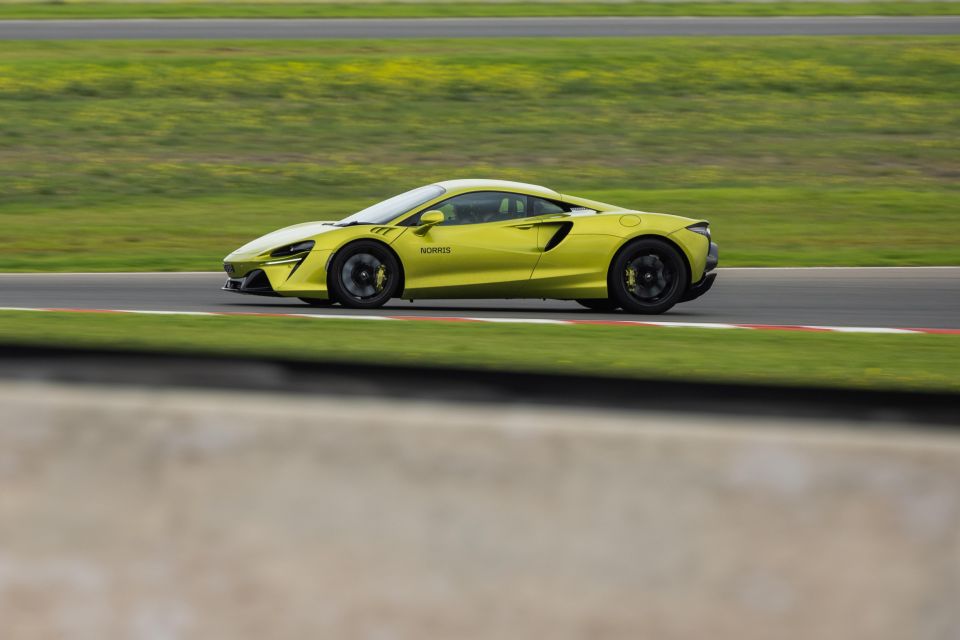
It’s hard to know what the ride is like on-road given we were on a smooth track; we can tell you there’s a meaningful difference between Comfort, Sport, and Track as you toggle through each using the rocker switch on the cowling over the digital instrument binnacle.
You get the same three options for the powertrain. Sport means the engine is always on, Track aggressively uses the engine to recharge the battery pack (on part throttle, not when you’re at full noise) to maintain charge in the battery for when you need it.
Both make the eight-speed automatic more aggressive, Track in particular makes it appreciably sharper.
McLaren says the Artura sits above the GT in its range, making it a proper supercar, but below the more powerful, track-focused 720S and 765LT.
In other words, it’s meant to excel on the road, but still be up to some track work.

With that in mind, McLaren has borrowed from the past to create its most futuristic mass-production car. There’s no electric power steering here, with the team instead opting for a more traditional hydraulic system in search of extra feel through the wheel, and you don’t get regenerative braking lest it sully the brake pedal feel.
The way the Artura delivers its performance is thoroughly modern, despite the old-school touches.
In Track Mode, with the everything cranked up to maximum attack, it delivers an almighty shove from down low thanks to the hybrid system, before the electric motor’s shove tapers off to blend in with what’s on offer from the twin-turbo V6.
There’s always a worry with complex plug-in hybrid systems that all the pieces will be fine in isolation, but come slightly undone when it comes time to work together. That doesn’t appear to be the case with the Artura.
According to the chief engineer, linearity was at the core of what McLaren was chasing with its most recent supercar, and it has delivered.
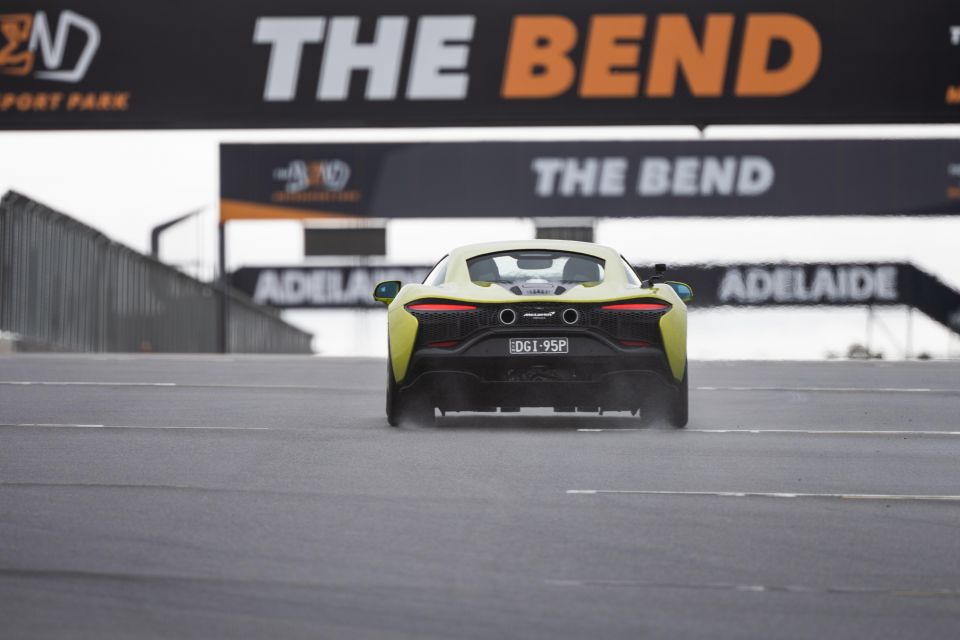
Where expert car reviews meet expert car buying – CarExpert gives you trusted advice, personalised service and real savings on your next new car.
From the way the e-motor works down low, to the way it bleeds into the petrol engine, to the way the transmission and differential deploy both power sources when you’re pushing hard, everything kind of just works to deliver a very natural feeling throttle pedal on the track.
Coupled with the chatty steering and a firm but natural-feeling brake pedal, the hybrid powertrain makes for a car that feels engaging and approachable on a wet track.
The steering feels immediately natural; direct, with a reassuring amount of weight, but it’s not hyperactive off-centre, and gives you a solid read on what’s happening at the front axle on a drying track, where grip is inconsistent.
This might be the baby McLaren supercar, but it still feels capable of biting in the wet. Once it’s turned you can feel the rear end come into play as you bleed in the accelerator, torque building smoothly, allowing you to inch out to the edges of the track with small steering inputs.
You really get what you ask for the with the throttle, with little inputs to the firm, long-travel accelerator pedal accompanied what you’d expect from the powertrain. And, it’s sneaky fast.

Get greedy with the right-hand pedal (whoops) and it’ll snap more sharply. There’s no boost spike, and no surge of electric power, but 720Nm of torque isn’t to be sneezed at. Drivers who want to build up to huge slip angles can use the Variable Drift Control system to dial in exactly how much assistance they want from the traction control.
There’s no pronounced moment where it comes on boost or the motor kicks, but it squeezes you back in the seat from right off idle to the 8500rpm redline, where the transmission slams home a new gear and you get to do it all again. On the road it’d be very, very easy to go much faster than you meant to without realising.
It just doesn’t sound all that flash. McLaren isn’t necessarily associated with screaming, sonorous engines at the best of times, but the V6 in the Artura sounds slightly muted and industrial at the best of times, and a bit harsh at certain points in the rev range.
The MP4-12C was whacked for the same thing at launch, from which point more noise was gradually extracted from its V8. Here’s hoping the same thing happens with the Artura.

Artura highlights:

Options
Practicality Pack ($NCO) adds:
There are also black and carbon-fibre interior and exterior packages.
The Artura has yet to be tested by ANCAP or Euro NCAP, though neither safety authority has tested a McLaren model before.

There’s no active safety technology standard, though the optional Technology Pack adds:
The Artura is covered by a five-year vehicle warranty, a six-year battery warranty and a 10-year body warranty.

It comes with three years of free scheduled servicing, likely in a nod to the fact the Artura is aimed at people who want to drive their cars daily (or close to it) rather than just on weekends.
The Artura is a strong first step into the world of hybrid power for McLaren.
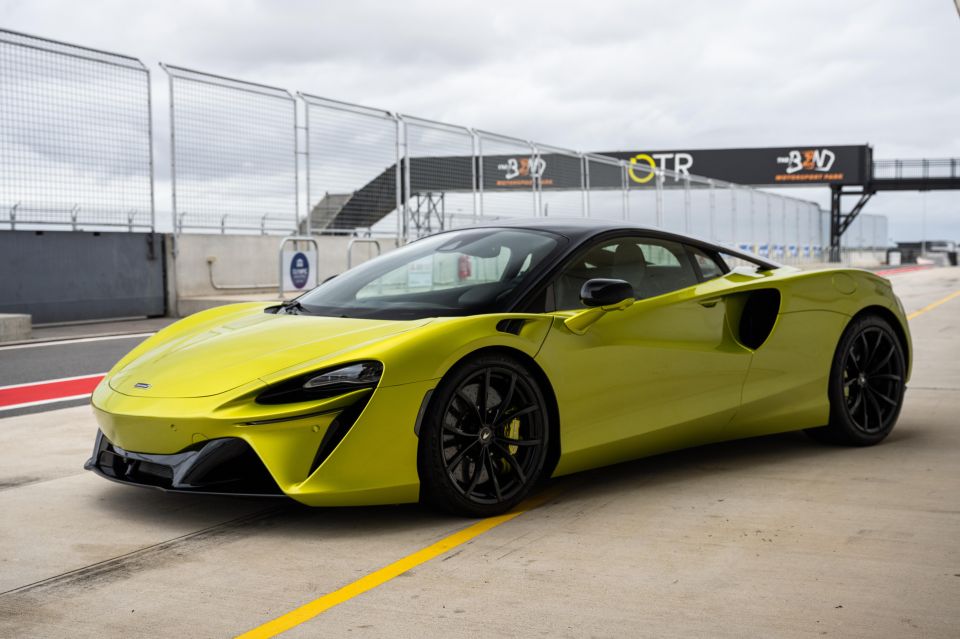
It feels true to the values it’s managed to establish over the past decade, but also manages to go about its business in a fundamentally different way with its hybrid powertrain. That’s no mean feat.
There’s still plenty of water to go under the bridge before we can call the Artura a success. It needs to perform over the long-term in the hands of real customers, which is always a challenge with new technology.
But based on our first tastes, it’s going to make those owners pretty damn happy with the way it balances old-school and new-school thinking, and the fact it’ll happily do both road and track driving.
The thought of where the technology underpinning the car could go over the next few years is fascinating, too.
There’s clearly plenty of headroom in the platform, and McLaren has shown itself capable (almost to a fault) of taking a recipe and relentlessly refining it – and it’s pretty tasty already.

Click the images for the full gallery
Where expert car reviews meet expert car buying – CarExpert gives you trusted advice, personalised service and real savings on your next new car.
Scott Collie is an automotive journalist based in Melbourne, Australia. Scott studied journalism at RMIT University and, after a lifelong obsession with everything automotive, started covering the car industry shortly afterwards. He has a passion for travel, and is an avid Melbourne Demons supporter.


Matt Robinson
25 Minutes Ago


Damion Smy
25 Minutes Ago


Damion Smy
15 Hours Ago


Damion Smy
16 Hours Ago


Damion Smy
17 Hours Ago


Damion Smy
19 Hours Ago